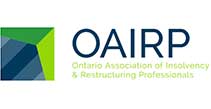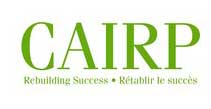Blog
Debt Solutions
Proposal Calculator
In a consumer proposal debt is payable over a 3 to 5 year period, without interest or fees.
Send Us an Email
Bankruptcy Articles
What happens when you declare bankruptcy in Ontario?
A: When you declare bankruptcy in Ontario, you will be required to surrender any non-exempt assets to a Licensed Insolvency Trustee (LIT) who will sell them to pay off your debts.
Your creditors will be notified and instructed to stop all collection actions against you. You will also be required to attend credit counselling sessions and make regular payments to the LIT.
Once the bankruptcy process is complete, you will be eligible for a discharge from your debts, which means you will no longer be responsible for paying them off.
Who qualifies for bankruptcy in Ontario?
A: To qualify for bankruptcy in Ontario, you must owe at least $1,000 in unsecured debts and be unable to pay them back.
You must reside in Canada or the majority of your assets are held in Canada. Additionally, you cannot have filed for bankruptcy within the past seven years.
How long is the bankruptcy process in Ontario?
A: The length of a first-time bankruptcy in Ontario is typically nine months. However, if your income is above a certain threshold, you may be required to make additional payments for a longer period of time.
It is important to note that bankruptcy should be considered as a last resort option. There are alternative debt relief options available, such as consumer proposals, debt consolidation, and credit counselling. It is recommended to seek the advice of a Licensed Insolvency Trustee to determine the best option for your individual financial situation.
How much does it cost to go bankrupt in Ontario?
A: The cost of filing for bankruptcy in Ontario can vary depending on your individual circumstances. However, the fee for filing bankruptcy is typically $1,800.
What do you lose if you declare bankruptcy in Canada?
A: When you declare bankruptcy in Canada, you may be required to surrender any non-exempt assets to a Licensed Insolvency Trustee (LIT), who will sell them to pay off your debts.
This may include your home, car, and other valuable assets. You may also lose your credit cards and be unable to obtain credit for several years. Most personal items you keep, cars under 10,000 dollars, tools of the trade. Give us a call and we can tell you in more detail.
What debts survive bankruptcy?
A: Some debts are not discharged by bankruptcy, including student loans that are less than seven years old, fines, court-ordered restitution, and child support payments.
Can I keep my car if I declare bankruptcy?
A: Whether or not you can keep your car when you declare bankruptcy depends on the value of the car and the amount of equity you have in it.
If the equity in your car is less than the exemption limit, you may be able to keep it.
How much do you pay monthly for bankruptcy?
A: The amount you pay monthly for bankruptcy depends on your income and expenses.
You will be required to make regular payments to a Licensed Insolvency Trustee (LIT) during the bankruptcy process, which will be used to pay your creditors.
Can you buy a house after bankruptcy in Ontario?
A: Yes, it is possible to buy a house after bankruptcy in Ontario.
However, it may be more difficult to obtain a mortgage and you may be required to pay a higher interest rate. Many people work on rebuilding their assets and credit rating for a while before considering a home purchase.
What happens 12 months after bankruptcy?
A: After 12 months, you may be eligible for a discharge from your debts, which means you will no longer be responsible for paying them off. You’ll be able to start fresh to rebuild your credit and financial health.
However, certain debts may survive bankruptcy, such as fines or debts resulting from fraud.
What happens 5 years after bankruptcy?
A: After five years, your bankruptcy will be removed from your credit report and you may be eligible for better credit options.
However, bankruptcy can remain on your record for up to seven years, which may affect your ability to obtain credit or employment.



